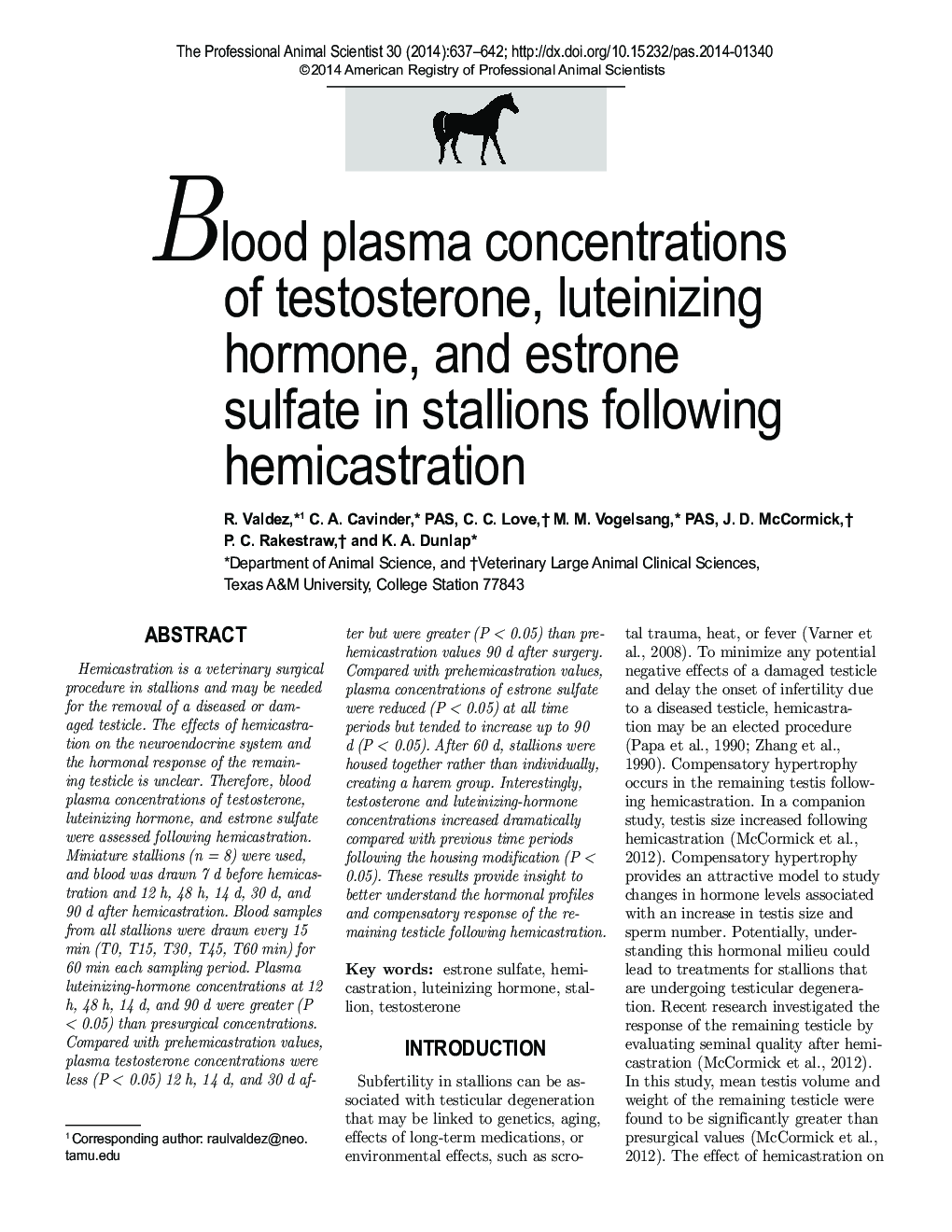| Article ID | Journal | Published Year | Pages | File Type |
|---|---|---|---|---|
| 2453810 | The Professional Animal Scientist | 2014 | 6 Pages |
Abstract
Hemicastration is a veterinary surgical procedure in stallions and may be needed for the removal of a diseased or damaged testicle. The effects of hemicastration on the neuroendocrine system and the hormonal response of the remaining testicle is unclear. Therefore, blood plasma concentrations of testosterone, luteinizing hormone, and estrone sulfate were assessed following hemicastration. Miniature stallions (n = 8) were used, and blood was drawn 7 d before hemicastration and 12 h, 48 h, 14 d, 30 d, and 90 d after hemicastration. Blood samples from all stallions were drawn every 15 min (T0, T15, T30, T45, T60 min) for 60 min each sampling period. Plasma luteinizing-hormone concentrations at 12 h, 48 h, 14 d, and 90 d were greater (P < 0.05) than presurgical concentrations. Compared with prehemicastration values, plasma testosterone concentrations were less (P < 0.05) 12 h, 14 d, and 30 d after but were greater (P < 0.05) than prehemicastration values 90 d after surgery. Compared with prehemicastration values, plasma concentrations of estrone sulfate were reduced (P < 0.05) at all time periods but tended to increase up to 90 d (P < 0.05). After 60 d, stallions were housed together rather than individually, creating a harem group. Interestingly, testosterone and luteinizing-hormone concentrations increased dramatically compared with previous time periods following the housing modification (P < 0.05). These results provide insight to better understand the hormonal profiles and compensatory response of the remaining testicle following hemicastration.
Related Topics
Life Sciences
Agricultural and Biological Sciences
Animal Science and Zoology
Authors
R. Valdez, C.A. PAS, C.C. Love, M.M. PAS, J.D. McCormick, P.C. Rakestraw, K.A. Dunlap,
